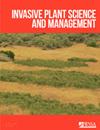Cross-boundary weed management in protected area–centered ecosystems: how can it work and what makes it harder to achieve?
IF 1.2
4区 生物学
Q3 PLANT SCIENCES
引用次数: 3
Abstract
Abstract Invasive species management in natural landscapes is generally executed at the scale of independent jurisdictions, yet the ecological processes and biodiversity to be protected from invasion occur over large spatial scales and across multiple jurisdictions. Jurisdictional land boundaries can influence the flows and dynamics of ecological systems, as well as the social systems that exist in these complex landscapes. Land management entities in large, protected area–centered ecosystems may use different approaches to address cross-boundary management challenges. To understand these differing strategies and their effects on cooperative invasive plant management, we interviewed employees with federal, county, and state agencies, research organizations, nonprofits, and local stakeholder groups in two national parks and their surrounding lands in California, USA. Although all participants stressed the importance of working together, they did so along a continuum of strategies ranging from simple communication to coordination of independent efforts to active collaboration. Barriers to collaboration can be categorized as originating within or externally to the management unit, including limited resources, differing agency priorities, paperwork requirements, and lack of support by higher-level managers. Strategies to reduce barriers depend on where they originate.以保护区为中心的生态系统的跨界杂草管理:它是如何工作的,是什么使它更难实现?
自然景观的入侵物种管理通常是在独立的管辖范围内进行的,而需要保护的生态过程和生物多样性则是在大的空间尺度和跨多个管辖范围内进行的。管辖范围内的土地边界可以影响生态系统的流动和动态,以及存在于这些复杂景观中的社会系统。在以保护区为中心的大型生态系统中,土地管理实体可以使用不同的方法来应对跨界管理挑战。为了了解这些不同的策略及其对合作性入侵植物管理的影响,我们在美国加利福尼亚州的两个国家公园及其周边地区采访了联邦、县和州机构、研究组织、非营利组织和当地利益相关者团体的员工。虽然所有与会者都强调合作的重要性,但他们是按照从简单沟通到协调独立努力再到积极合作的一系列战略进行合作的。协作的障碍可以分为源自管理单位内部或外部的障碍,包括有限的资源、不同的代理优先级、文书工作需求,以及缺乏高层管理人员的支持。减少壁垒的战略取决于壁垒的来源。
本文章由计算机程序翻译,如有差异,请以英文原文为准。
求助全文
约1分钟内获得全文
求助全文
来源期刊

Invasive Plant Science and Management
PLANT SCIENCES-
CiteScore
2.20
自引率
9.10%
发文量
24
审稿时长
6-12 weeks
期刊介绍:
Invasive Plant Science and Management (IPSM) is an online peer-reviewed journal focusing on fundamental and applied research on invasive plant biology, ecology, management, and restoration of invaded non-crop areas, and on other aspects relevant to invasive species, including educational activities and policy issues. Topics include the biology and ecology of invasive plants in rangeland, prairie, pasture, wildland, forestry, riparian, wetland, aquatic, recreational, rights-of-ways, and other non-crop (parks, preserves, natural areas) settings; genetics of invasive plants; social, ecological, and economic impacts of invasive plants and their management; design, efficacy, and integration of control tools; land restoration and rehabilitation; effects of management on soil, air, water, and wildlife; education, extension, and outreach methods and resources; technology and product reports; mapping and remote sensing, inventory and monitoring; technology transfer tools; case study reports; and regulatory issues.
 求助内容:
求助内容: 应助结果提醒方式:
应助结果提醒方式:


